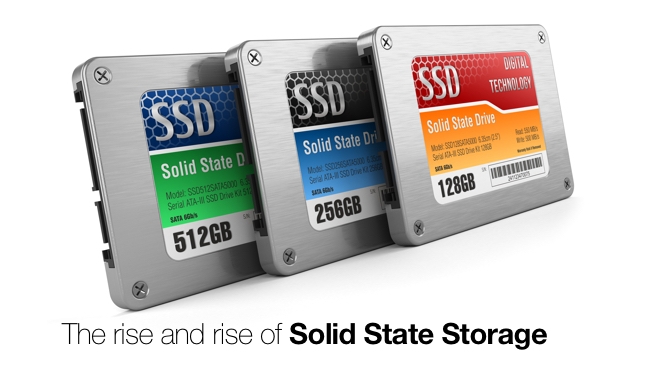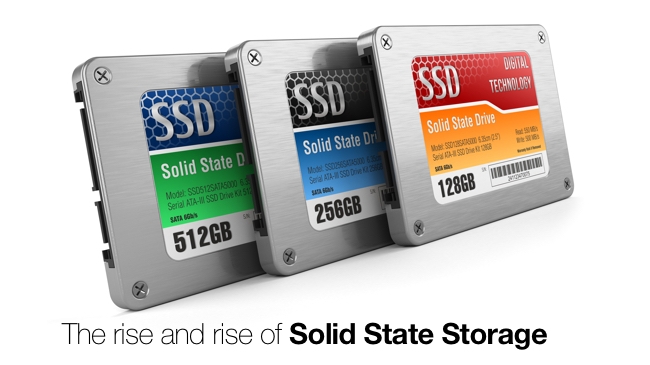

The news that WDC is buying SanDisk has set the computer industry alight. As an entire industry re-invents itself, Leo Waldock charts the full story.
Hard drive giant WDC (Western Digital Corporation) has announced it is buying SanDisk for $19bn in cash and stocks. This is huge news for the storage industry and also been widely anticipated as SanDisk has been eyed up by both Seagate and WDC, yet the curious result is that WDC's share price dropped by the best part of one percent once the deal was made public.
WDC is paying US$85.10 per SanDisk share plus a certain amount of WDC stock so we have to assume the market thinks this price is slightly too high.
To which I say 'Phooey' and heartily recommend the WDC board gets a hefty bonus as it is my opinion that this purchase may very well save WDC from vanishing into obscurity over the next few years.
We have seen a huge amount of consolidation in the HDD market in recent years to such an extent that only three companies remain standing.
The global HDD market is worth around $37bn, of which WDC has 43%, Seagate 41% and Toshiba 16% (Samsung HDD is a brand owned by Seagate, and Hitachi Global Storage is owned by WDC).
On the face of it hard drive sales are in rude health and you can find graphs galore that show a steady upward trend. It makes a huge difference whether you look at sales of HDD units, sales of storage units (typically measured in Exabytes) or revenue. As drives increase in capacity while prices drift downwards the big three can sell more storage in fewer drive units for less money, which inevitably squeezes profits.
So WDC, the (slightly) bigger beast in the HDD market with an annual income of $16bn has bought SanDisk which has one third the sales. The reason, of course, is that SSD is the future for storage while HDD looks set to be consigned to history.
Costs per Gigabyte
When I first reviewed an 80GB Intel SSD in 2008 the price was £399, which worked out to £5 per Gigabyte. The low capacity meant it simply wasn't possible to build a decent gaming PC or workstation that ditched HDD in favour of SSD unless you did something daring with a bunch of SSD in RAID and spent about £2000 in the process. The capacity was too low, the price too high and reliability was suspect, however the potential was clear.
Today I can buy a 1TB Crucial MX 200 for £273 (27p per GB), or a 960GB SanDisk Ultra II for £216 (23p per GB). And while those numbers don't compare all that well with a 4TB WD Blue drive at £133 (3p per GB) there is a significant part of the PC and laptop markets that can forget about spinning rust and instead rely on solid state storage.
At first glance it appears that between 2007 and 2015 the capacity of SSD has risen from 80GB to 1TB, however that is only true if we look at the 2.5-inch form factor for consumer SSD. Samsung lists a 1.92TB SM863 Enterprise SSD that uses 2-bit MLC VNAND, a 3.84TB PM863 with 3-bit MLC VNAND and has shown a 16TB model called the PM1633a.
I have been told that Samsung will offer 4TB consumer and 8TB Enterprise drives in 2016. It's the 3D NAND that makes the difference, and the way that Samsung can switch from 2-bit to 3-bit to increase capacity at the expense of performance.
So that's 4TB today and 8TB next year if you spend a fortune, or 1TB today for less than £300 and presumably 2TB next year at the same reasonable price point.
In 2011 I reviewed a group of ginormous hard drives with 2TB and 3TB capacity. Today you can buy a 6TB drive at retail with the option of 8TB for specialised applications such as cold storage i.e. rarely accessed archives where speed isn't an issue. The current capacity limit for 3.5-inch hard drives is 1.33TB per platter and Showa Denko has announced 1.5TB platters, so that's 9TB in a conventional drive or 10.5TB if you fill the unit with helium and squeeze in a seventh platter. There don't appear to be any HDD innovations in the pipeline so the name of the game is incremental improvements,
In 2016 we will effectively see SSD close the gap on HDD capacity and I see no reason why the mainstream capacity crown won't change hands from HDD to SSD in 2017 or 2018.
The question is when?
The next question is when SSD will become cheaper than HDD, and my guess here is the same two or three year period. A 2TB SSD for £200 will be a compelling proposition for the workstation market and 2TB for £100 will rip the hard drive market to pieces.
In 2013 the SSD market was worth $11bn with Samsung owning 28%, Intel 14% and SanDisk 12%. Samsung designs and manufactures its own SSD controllers, cache chips and NAND chips in house and also bakes its own firmware. In addition it is leading the market in 3D NAND where memory is stacked up to increase capacity. The new 950 Pro SSD in M.2 form has a controller chip, cache chip and two NAND chips that give a capacity of 512GB. Those four chip are located on one side of the PCB so Samsung could clearly add two or four NAND chips on the rear of the PCB to deliver 1TB in M.2 form.
There are wheels within wheels. When Seagate bought the Samsung HDD business it signed a deal to source NAND from Samsung and also owns the LSI Sandforce controller so is well placed to manufacture SSD. Intel has a NAND tie-up with Micron, which sells SSD and memory under its Crucial brand.
The other big player in the NAND market is Toshiba which bought OCZ and acquired the Bigfoot controller at the same time so Toshiba is able to manufacture SSD from end-to-end.
Companies such as Corsair will doubtless continue building SSD using bought in components however they will surely be at a disadvantage when it comes to the cost of components compared to the likes of WDC, Seagate, Toshiba, Intel and Micron.
As things stand the WDC acquisition of SanDisk keeps WDC in the storage game and puts a significant amount of pressure on Seagate. I have little doubt that Samsung continues to feel highly confident about the future.
Tags: Technology


Comments